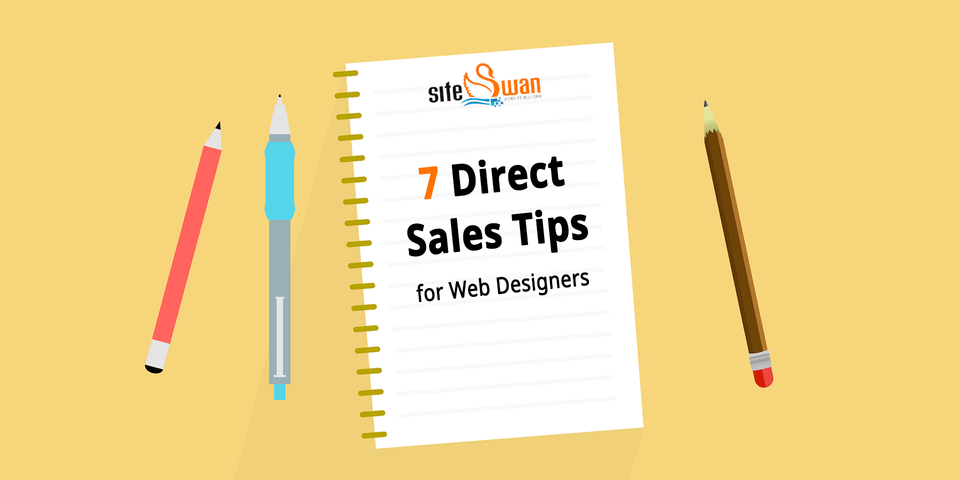January
12, 2021Building a successful web design business requires more than just the right software and an “eye for design.” In fact, a large portion of your time and efforts will be spent on marketing and business development. Direct sales in particular can play a key role in the success of any web design business, and the more you can do to streamline your efforts, the more likely it is that they'll pay off for you.
If you're lacking in direct sales experience but are ready to hit the ground running, here are seven tips that will help you succeed.
1. Target the RIGHT Customers
When trying to drum-up business as a web designer, it's usually best to start small. That is, the customers you target should be small businesses as opposed to huge corporations or franchises. It's also important to avoid clients who may have unrealistic expectations like trying to become the next Amazon or Nike. Focus on "mom and pop shops" that are looking for a simple site in order to promote their business, highlight their products and services, and communicate with their customers in a clear and effective manner.
2. Do Your Research
It's always a good idea to do a little bit of homework and research any businesses you plan on contacting. For example, try to find out who the key decision-maker at the company is and what time of day is best to reach them. Does the business already have a website, how much are they paying, and are they currently doing any other forms of marketing? What are their competitors doing? These are the types of things you'll want to look into so you can better prepare yourself and personalize your pitch.
3. Respect Your Clients' Time
It's easy to overlook the fact that just because your schedule might allow for a phone call or conversation doesn't mean the same is true for somebody else. When working with current or prospective clients or businesses, avoid contacting them during their busiest times. If you do get them on a call, be brief & succinct, and make a point to acknowledge that they're probably busy and that you don't want to waste their valuable time—this is a great way to show respect, drive and reliability.
4. Focus on the Benefits
Many people make the mistake of listing off a buffet of features to prospective clients when trying to sell a website. These can be easily forgotten or lost in the mix, which is why it's better to focus on the benefits that your services can provide. Talk about how a high-quality website can help them grow their business, be more efficient or better serve their customers, build trust, generate leads and ultimately boost their bottom line. Once you've accomplished this, you can dive into the bells and whistles of what makes a great website truly great, if the conversation goes in that direction.
5. Earn Their Trust
Trust is everything in any working relationship, and the more you can do to front-load earning your clients' trust, the better. Be prepared and well-dressed for any meetings. Have business cards or marketing material on hand. Share examples of work you've done in the past, which prove that you're able to actually do the work you say you can. Let them know you'll always be available to make updates to their site after the sale is finished, and stay true to your promise of being accessible for contact during normal business hours.
6. Take a Holistic Approach to Communication
Some businesses respond better to emails while others prefer in-person visits or phone conversations. Don’t assume that if a business doesn’t respond to an email or return a call, that they’re not interested. Be sure to utilize all forms of communication to reach a current or potential client, including phone, email, face-to-face communication (if possible) and social media. By taking a holistic approach such as this, you can stay in front of your prospects and ensure they are receiving your messages and that you're not overlooking any potentially hidden opportunities.
7. Always Follow Up
According to MarketingDonut*, only 2% of sales occur at a first meeting and 80% of prospects will say “NO” four times before they say “YES.” That means it can take FIVE continuous follow-up efforts to close a sale. However, the majority of salespeople, 92% to be exact, will give up and stop calling after the fourth call.
The small percentage of salespeople who actually follow up 5 times or more are the ones who close the majority of sales. Remember that persistence pays off in sales, and "no" doesn't necessarily mean "never." If a particular tactic doesn't seem to be working, don't be afraid to try a different approach or reach back out at a later date.
Getting comfortable with direct sales can be greatly beneficial to your web design business, and it doesn't have to be as hard as you might think. Keep a positive attitude and follow the tips outlined above—the rest will fall into place with time, determination and hard work.


